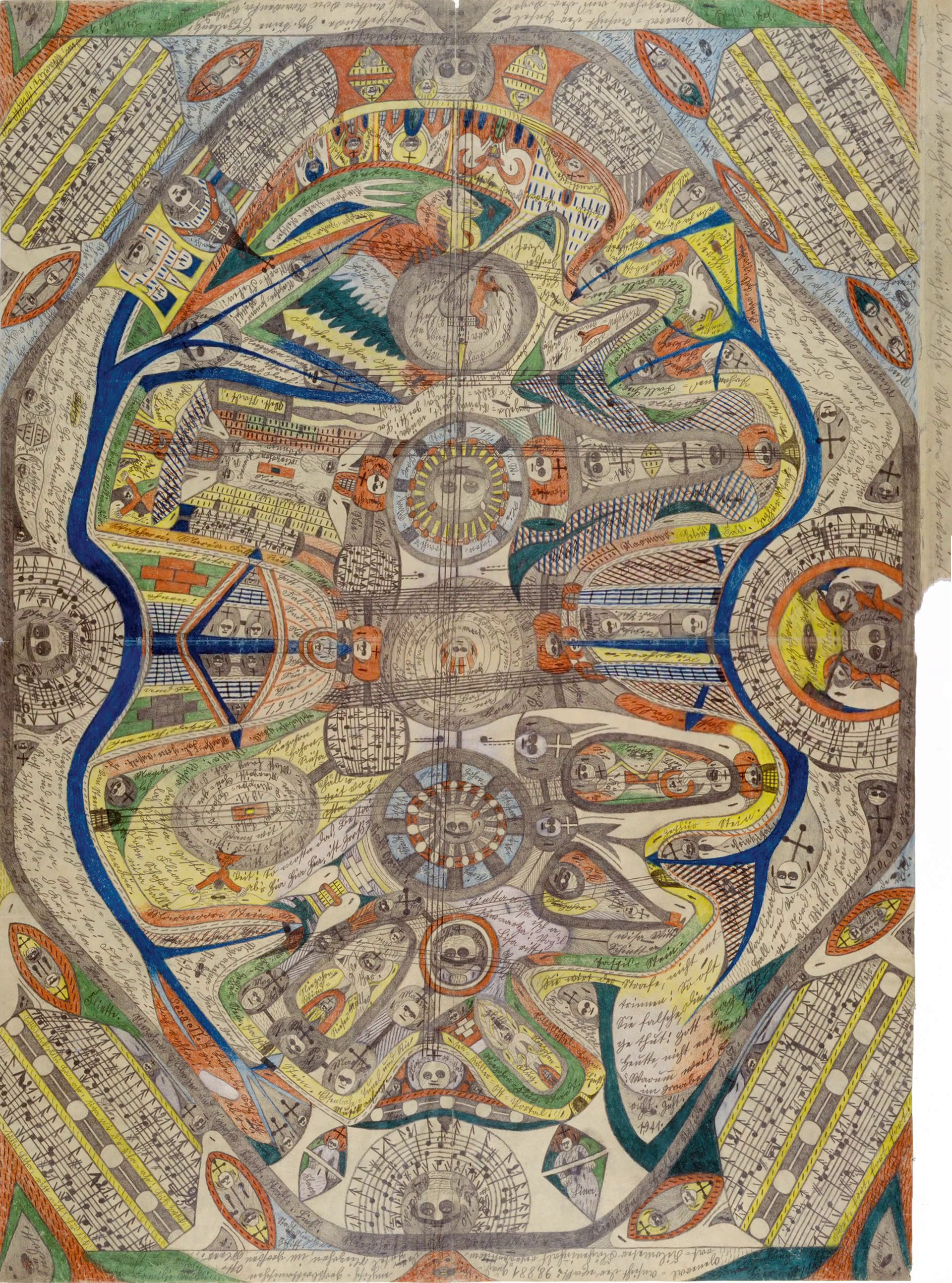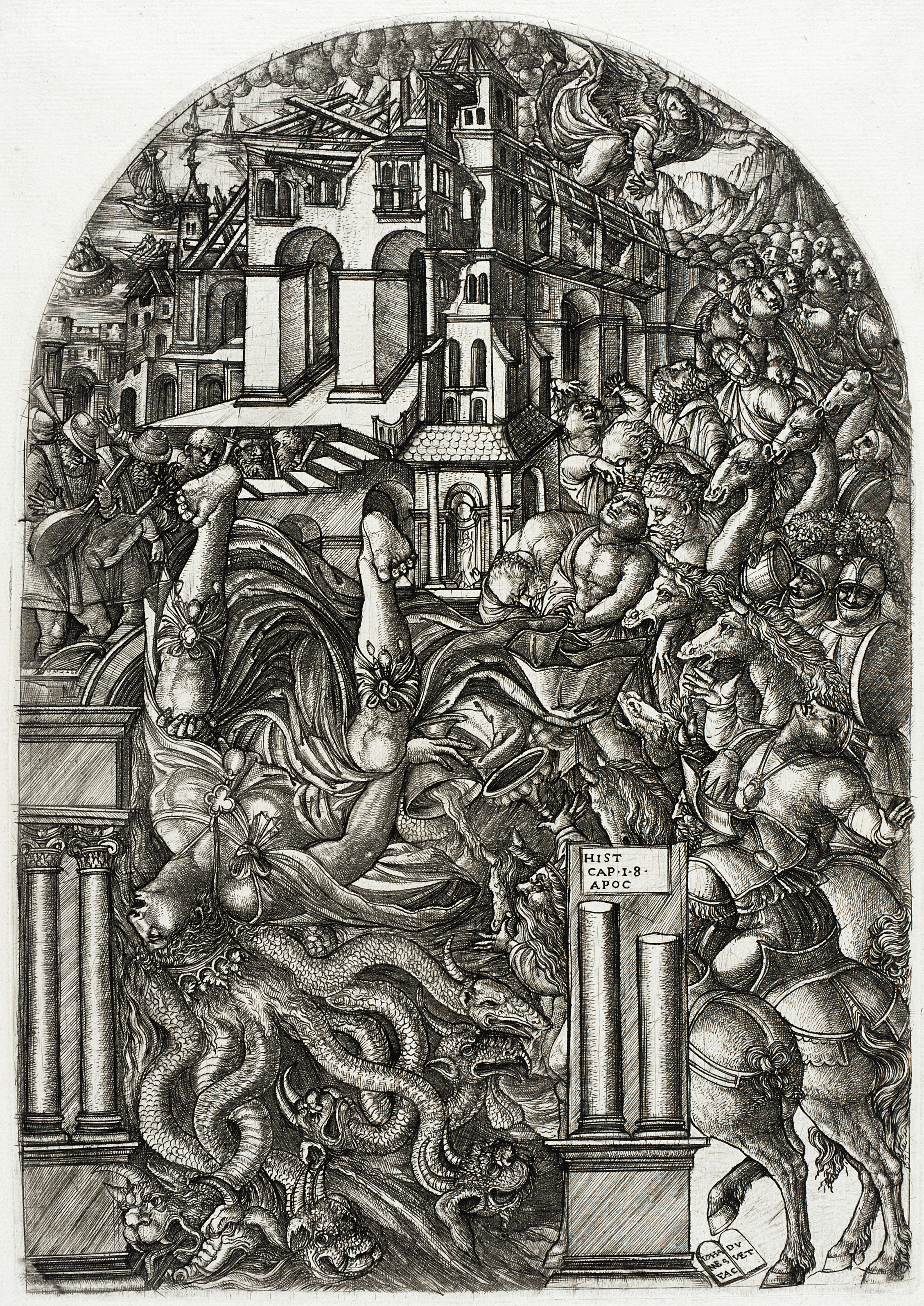Horror vacui (art) on:
[Wikipedia]
[Google]
[Amazon]

 In
In
Art term: Horror Vacui, by Jack Cantey
Fort Wayne Museum of Art Art history Outsider art Latin words and phrases

 In
In visual art
The visual arts are art forms such as painting, drawing, printmaking, sculpture, ceramics, photography, video, filmmaking, design, crafts and architecture. Many artistic disciplines such as performing arts, conceptual art, and textile arts ...
, horror vacui (, ; ), also referred to as kenophobia (from ), is the filling of the entire surface of a space or an artwork
A work of art, artwork, art piece, piece of art or art object is an artistic creation of aesthetic value. Except for "work of art", which may be used of any work regarded as art in its widest sense, including works from literature ...
with detail. In physics, '' horror vacui'' reflects Aristotle's idea that "nature abhors an empty space."
Origins
Italian art critic and scholarMario Praz
Mario Praz (; September 6, 1896, Rome – March 23, 1982, Rome) was an Italian-born critic of art and literature, and a scholar of English literature. His best-known book, ''The Romantic Agony'' (1933), was a comprehensive survey of the decadent ...
used this term to describe the excessive use of ornament in design during the Victorian age
In the history of the United Kingdom and the British Empire, the Victorian era was the period of Queen Victoria's reign, from 20 June 1837 until her death on 22 January 1901. The era followed the Georgian period and preceded the Edwardian ...
. Other examples of horror vacui can be seen in the densely decorated carpet page
A carpet page is a full page in an illuminated manuscript containing intricate, non-figurative, patterned designs.Moss, 57 They are a characteristic feature of Insular manuscripts, and typically placed at the beginning of a Gospel Book. Carpet p ...
s of Insular illuminated manuscripts, where intricate patterns and interwoven symbols may have served "''apotropaic'' as well as decorative functions." The interest in meticulously filling empty spaces is also reflected in Arabesque
The arabesque is a form of artistic decoration consisting of "surface decorations based on rhythmic linear patterns of scrolling and interlacing foliage, tendrils" or plain lines, often combined with other elements. Another definition is "Foli ...
decoration in Islamic art from ancient times to present. The art historian Ernst Gombrich
Sir Ernst Hans Josef Gombrich (; ; 30 March 1909 – 3 November 2001) was an Austrian-born art historian who, after settling in England in 1936, became a naturalised British citizen in 1947 and spent most of his working life in the United Kin ...
theorized that such highly ornamented patterns can function like a picture frame for sacred images and spaces. "The richer the elements of the frame," Gombrich wrote,"the more the centre will gain in dignity."
Another example comes from ancient Greece during the Geometric Age
The term Greek Dark Ages refers to the period of Greek history from the end of the Mycenaean palatial civilization, around 1100 BC, to the beginning of the Archaic age, around 750 BC. Archaeological evidence shows a widespread collapse ...
(1100–900 BCE), when horror vacui was considered a stylistic element of all art. The mature work of the French Renaissance engraver Jean Duvet consistently exhibits horror vacui.
Examples
Horror vacui is apparent in some styles ofpostmodern
Postmodernism is an intellectual stance or mode of discourseNuyen, A.T., 1992. The Role of Rhetorical Devices in Postmodernist Discourse. Philosophy & Rhetoric, pp.183–194. characterized by skepticism toward the " grand narratives" of moderni ...
graphic design
Graphic design is a profession, academic discipline and applied art whose activity consists in projecting visual communications intended to transmit specific messages to social groups, with specific objectives. Graphic design is an interdiscipli ...
, including the work of artists like David Carson or Vaughan Oliver
Vaughan Oliver (12 September 1957 – 29 December 2019) was a British graphic designer based in Epsom, Surrey. Oliver was best known for his work with graphic design studios 23 Envelope and v23. Both studios maintained a close relationship with ...
, and in the underground comix
Underground comix are small press or self-published comic books that are often socially relevant or satirical in nature. They differ from mainstream comics in depicting content forbidden to mainstream publications by the Comics Code Authority, ...
movement in the work of S. Clay Wilson
Steve Clay Wilson (July 25, 1941 – February 7, 2021) was an American underground cartoonist and central figure in the underground comix movement. Wilson attracted attention from readers with aggressively violent and sexually explicit panoramas ...
, Robert Crumb
Robert Dennis Crumb (; born August 30, 1943) is an American cartoonist and musician who often signs his work R. Crumb. His work displays a nostalgia for American folk culture of the late 19th and early 20th centuries, and satire of contem ...
, Robert Williams, and later comic artists such as Mark Beyer. The paintings of Williams, Faris Badwan
Faris Adam Derar Badwan (born 21 September 1986) is an English musician, best known as the lead vocalist of the Horrors, and more recently as half of Cat's Eyes.
Early life
Born in Bexley, Kent on 21 September 1986 to a Palestinian father and ...
, Emerson Barrett, Joe Coleman and Todd Schorr
Todd Schorr (born January 9, 1954) is an American artist and member of the " Lowbrow" art movement or pop surrealism. Combining a cartoon influenced visual vocabulary with a highly polished technical ability, based on the exacting painting met ...
are further examples of horror vacui in the modern Lowbrow art movement.
The entheogen
Entheogens are psychoactive substances that induce alterations in perception, mood (psychology), mood, consciousness, cognition, or behavior for the purposes of engendering spiritual development or otherwiseRätsch, Christian, ''The Encyclop ...
-inspired visionary art
Visionary art is art that purports to transcend the physical world and portray a wider vision of awareness including spiritual or mystical themes, or is based in such experiences.
History
The Vienna School of Fantastic Realism, first estab ...
of certain indigenous peoples
Indigenous peoples are culturally distinct ethnic groups whose members are directly descended from the earliest known inhabitants of a particular geographic region and, to some extent, maintain the language and culture of those original people ...
, such as the Huichol
The Huichol or Wixárika are an indigenous people of Mexico and the United States living in the Sierra Madre Occidental range in the states of Nayarit, Jalisco, Zacatecas, and Durango, as well as in the United States in the states of California ...
yarn paintings and the ayahuasca
AyahuascaPronounced as in the UK and in the US. Also occasionally known in English as ''ayaguasca'' (Spanish-derived), ''aioasca'' (Brazilian Portuguese-derived), or as ''yagé'', pronounced or . Etymologically, all forms but ''yagé'' descen ...
-inspired art of Pablo Amaringo
Pablo Cesar Amaringo Shuña (January 21, 1938 – November 16, 2009) was a Peruvian artist, renowned for his intricate, colourful depictions of his visions from drinking the entheogenic plant brew ayahuasca. He was first brought to the West ...
, often exhibits this style, as does the psychedelic art
Psychedelic art (also known as psychedelia) is art, graphics or visual displays related to or inspired by psychedelic experiences and hallucinations known to follow the ingestion of psychedelic drugs such as LSD, psilocybin, and DMT. The word "p ...
movement of the 1960s counterculture. Sometimes the patterned art in clothing of indigenous peoples of Middle and South America exhibits horror vacui. For example, the geometric molas
MOLA (Museum of London Archaeology) is an archaeology and built heritage practice and independent charitable company registered with the Chartered Institute for Archaeologists (CIfA), providing a wide range of professional archaeological service ...
of Kuna
Kuna may refer to:
Places
* Kuna, Idaho, a town in the United States
** Kuna Caves, a lava tube in Idaho
* Kuna Peak, a mountain in California
* , a village in the Orebić municipality, Croatia
* , a village in the Konavle municipality, Croatia ...
people and the traditional clothing on Shipibo-Conibo
The Shipibo-Conibo are an indigenous people along the Ucayali River in the Amazon rainforest in Peru. Formerly two groups, the Shipibo and the Conibo, they eventually became one distinct tribe through intermarriage and communal ritual and are c ...
people.
The artwork in the Where's Wally?
''Where's Wally?'' (called ''Where's Waldo?'' in North America) is a British series of children's puzzle books created by English illustrator Martin Handford. The books consist of a series of detailed double-page spread illustrations depictin ...
series of children's books is a commonly known example of horror vacui, as are many of the small books written or illustrated by the macabre imagination of Edward Gorey
Edward St. John Gorey (February 22, 1925 – April 15, 2000) was an Americans, American writer, Tony Award-winning costume designer, and artist, noted for his own illustrated books as well as cover art and illustration for books by other w ...
.
The Tingatinga painting style of Dar es Salaam in Tanzania is a contemporary example of horror vacui. Other African artists such as Malangatana of Mozambique (Malangatana Ngwenya
Malangatana Valente Ngwenya (6 June 1936 – 5 January 2011) was a Mozambican painter and poet. He frequently exhibited work under his first name alone, as Malangatana. He died on 5 January 2011 in Matosinhos, Portugal.
Life
Born in Matalana ...
) also fill the canvas in this way.
The arrangement of Ancient Egyptian hieroglyphs
A hieroglyph (Greek for "sacred carvings") was a character of the ancient Egyptian writing system. Logographic scripts that are pictographic in form in a way reminiscent of ancient Egyptian are also sometimes called "hieroglyphs". In Neoplatonis ...
suggests an abhorrence of empty space. Signs were repeated or phonetic complement
A phonetic complement is a phonetic symbol used to disambiguate word characters (logograms) that have multiple readings, in mixed logographic-phonetic scripts such as Egyptian hieroglyphs, Akkadian cuneiform, Japanese, and Mayan. Often they re ...
s added to prevent gaps.
Current usage and meaning
There is an inverse relationship between ''horror vacui'' and value perception. Commercial designers favor visual clarity in shop window displays and advertising to appeal to affluent and well-educated consumers, on the premise that understatement and restraint appeals to more affluent and educated audiences. In one study, 100 clothing stores were surveyed to find patterns and relationship between how efficiently the store's real estate was used and the store's brand prestige. Bulk sales shops and chain stores were found to fill their window displays to maximum capacity, while high-end boutiques often used their space sparsely, with no price tags—the assumption being that if a passersby needed to know the price, they could not afford it.Analogy
The term is also used as an analogy to the Aristotelian idea that a physical vacuum is impossible, and, therefore, the idea must be rejected. This was widely believed up to the time of Rene Descartes.See also
* Adolf Wölfli *Fractal art
Fractal art is a form of algorithmic art created by calculating fractal objects and representing the calculation results as still digital images, animations, and media. Fractal art developed from the mid-1980s onwards. It is a genre of compute ...
, infinitely detailed computer-generated art
*Azerbaijani rug
Azerbaijani rugs ( az, Azərbaycan xalçaları) are traditional rugs made in Azerbaijan. The Azerbaijani rug is a handmade textile of various sizes, with a dense texture and a pile or pile-less surface, whose patterns are characteristic of Azerbai ...
*Persian carpet
A Persian carpet ( fa, فرش ایرانی, translit=farš-e irâni ) or Persian rug ( fa, قالی ایرانی, translit=qâli-ye irâni ),Savory, R., ''Carpets'',(Encyclopaedia Iranica); accessed January 30, 2007. also known as Iranian ...
References
{{reflistExternal links
Art term: Horror Vacui, by Jack Cantey
Fort Wayne Museum of Art Art history Outsider art Latin words and phrases